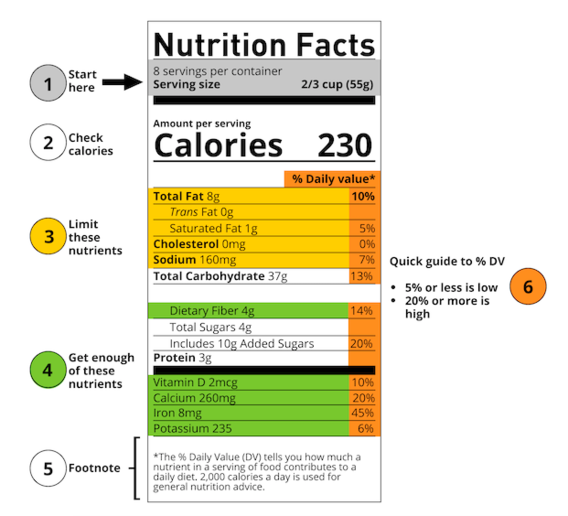
You can learn a lot from the Nutrition Facts Label. Check serving size, sodium and sugar content before choosing the item to put in your grocery cart.
- Serving size: All of the nutrient values are listed per serving, so if you typically eat a whole package, multiply the nutrient values times the number of servings in the package.
- Check calories: Again, calories are listed per serving. This label is for a package that contains two servings. If you ate the whole package, you’d actually be getting 500 calories.
- Limit these nutrients: The 2015 Dietary Guidelines for Americans recommends that we eat less saturated fat and sodium. Cholesterol is listed for those who are limiting their intake of dietary cholesterol. Compare labels to choose the lower sodium and lower saturated fat option. Look at the sugar content too and choose the lower-sugar option if possible.
- Quick guide to the % daily value (DV): These percentages are based on a “typical” 2000 calorie-a-day diet. Use these percentages as a quick way to decide which products to buy. As a general rule, if the product contains less than 5% of a DV, it is considered to be low in that nutrient. If it contains more than 20% DV, it is considered to be high in that nutrient.
- Footnotes: An explanation of how the percentage of DV values are calculated.